TL;DR - I reverse‑engineered SkyCards, a game that turns live flight spotting into a collectible. This post walks through intercepting traffic, reading a React Native + Hermes bundle, finding a native request‑signing bridge, and wiring up a small client that talks to FlightRadar24's protobuf/gRPC endpoints to automate captures.
SkyCards in a nutshell
SkyCards takes the plane‑spotter vibe and turns it into a collection loop. The app shows live flights near you with a rarity score. You pick one, jump into a mini‑game, and try to "photograph" the aircraft as it crosses the frame. If roughly ≥90% of the plane is inside the shot, you capture it. Captures store tail number, model (e.g., "Boeing 787"), route, and a timestamp. Rarer flights give more XP. You have a camera with a limited number of shots that refresh over time (with optional in‑app purchases for more).
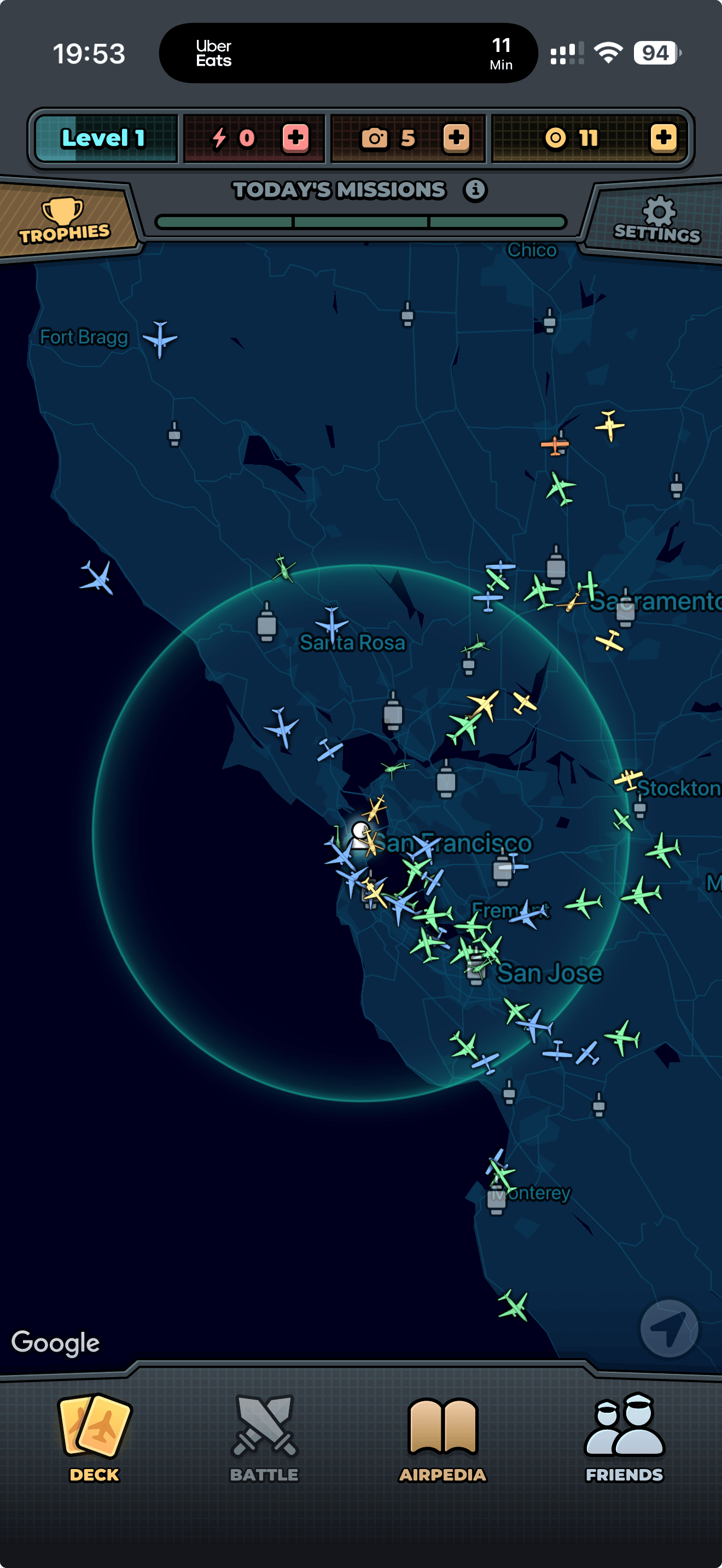
SkyCards - map view
Once you tap a plane, you see its card and can decide whether to try a capture.
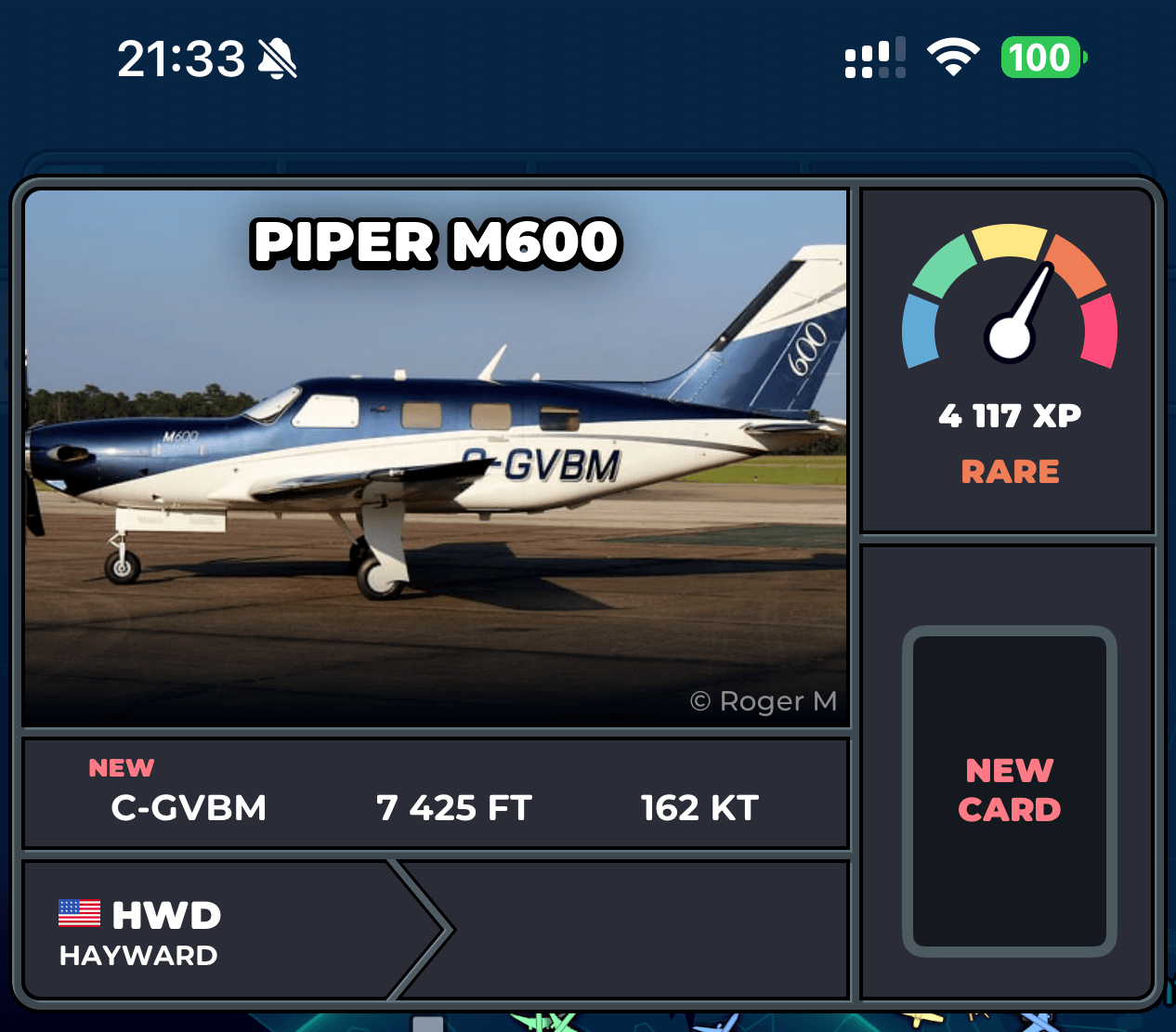
SkyCards - plane card
If you try to capture it, you play a mini‑game: the plane flies across the screen and you snap the photo when it's fully in frame.
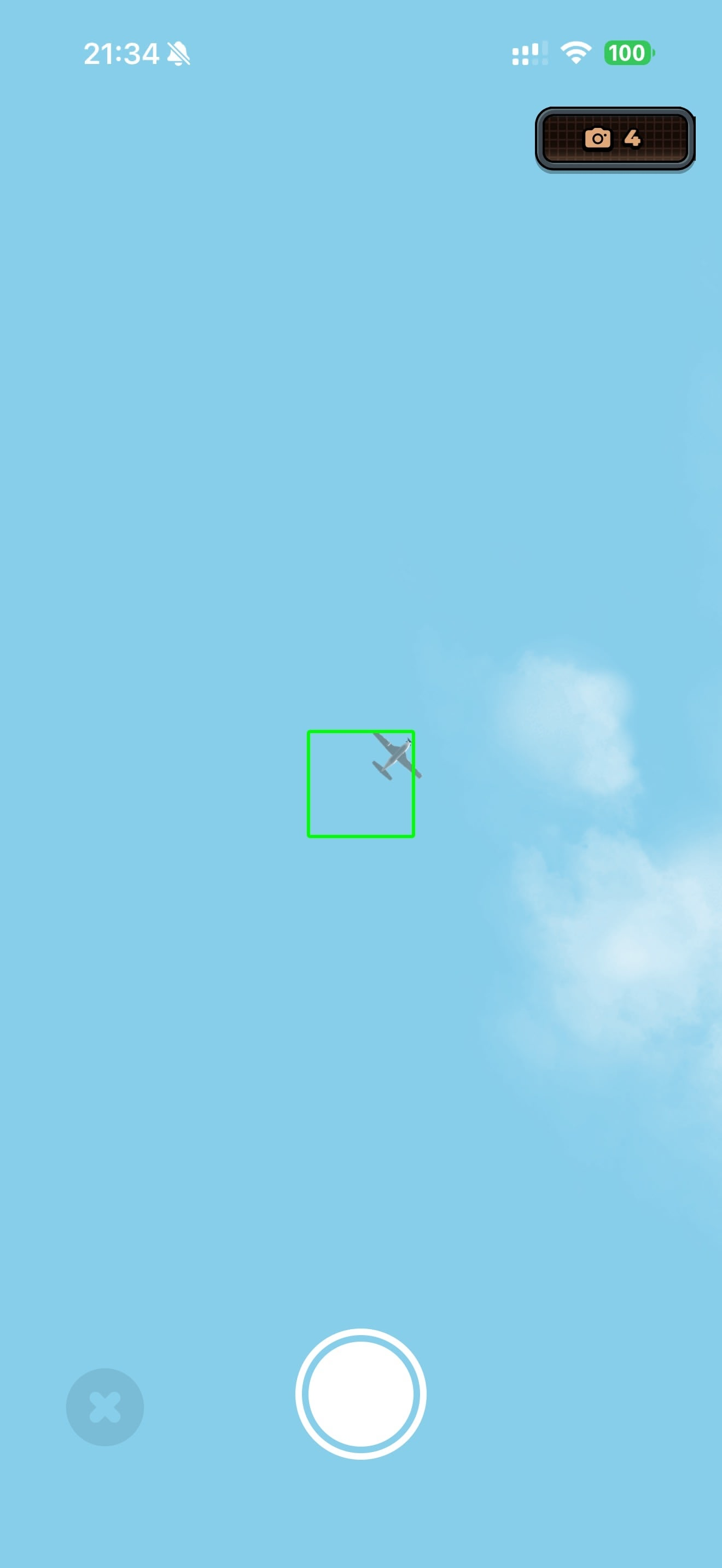
SkyCards - capture mini‑game
On success, you get a confirmation screen and the flight is added to your collection.
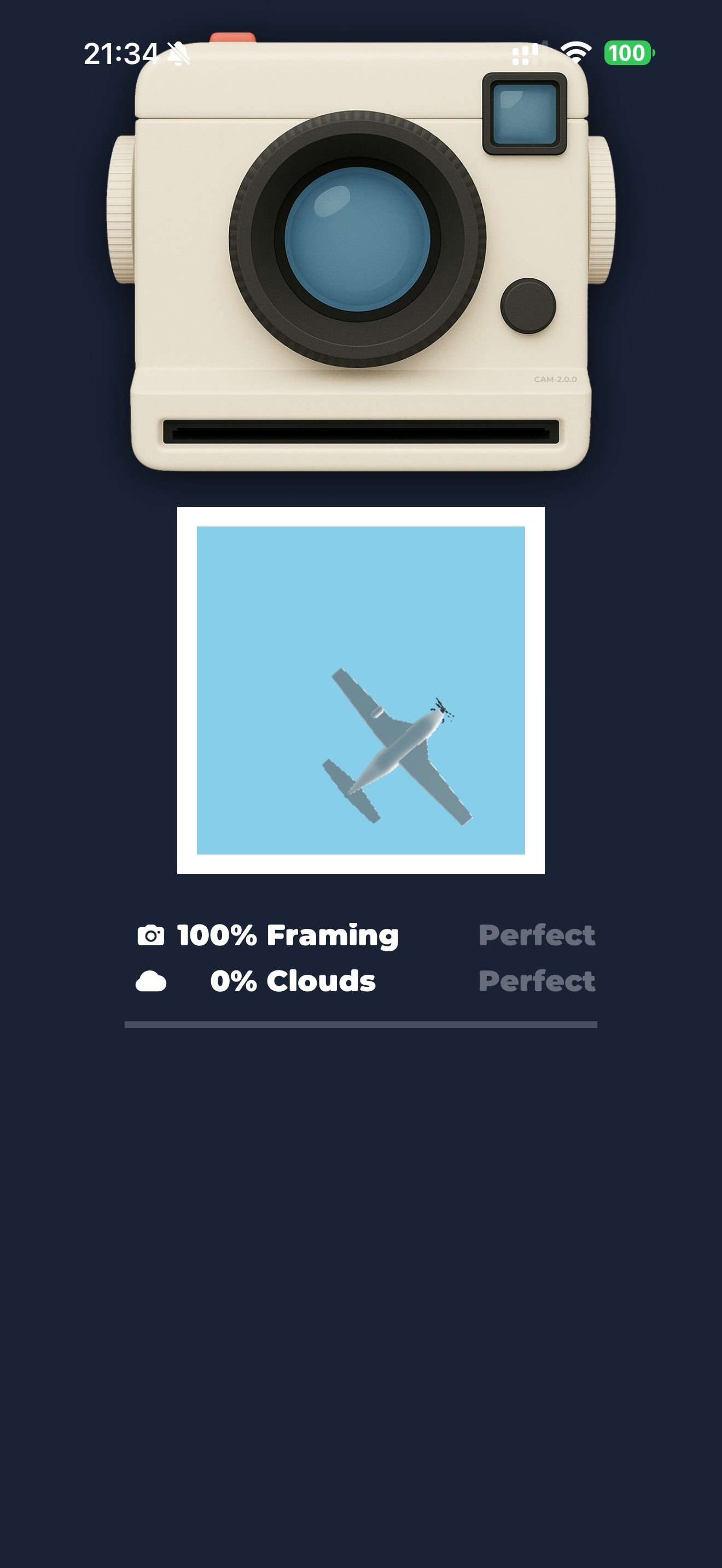
SkyCards - capture success
Digging into the app
I enjoy aviation and reverse engineering, so this felt like a good crossover project. I started by booting up Proxyman to see if I could intercept the app's traffic.
Luckily the app didn't do certificate pinning or TLS fingerprinting, so I was off to the races.
The flights endpoint returned binary (protobuf) data that I didn't have definitions for yet, while the capture‑related endpoint spoke JSON.
When you attempt a capture, two client actions pop out immediately:
- Spend camera shot - decrements your shot inventory.
- Register capture - sends the result (selected flight, "% in frame," and some metadata).

The two endpoints called when you go through a mini game
Notably, the captures endpoint was separate from the consume (shot‑spend) endpoint and didn't validate against a prior consume call. Practically, you could sinkhole the consume endpoint and never burn shots.
The mini‑game itself runs client‑side; "how much of the plane is in frame" ultimately becomes a number in the request body, seen below. coverage represents the percent of the plane in the shot, and cloudiness captures how cloudy the frame is (which affects score/XP).
{
"sub": "your-user-id",
"iat": 1757403992,
"data": {
"alt": 3000,
"speed": 0,
"reg": "SKY-CARDS",
"callsign": "ONBOARDING",
"associatedAirportId": 3147,
"flightId": 1,
"track": 45,
"icon": 0,
"status": 0,
"timestamp": 1757403964331,
"onGround": false,
"source": 0,
"model": "B738",
"xp": 1380,
"xpUserBonus": 1700,
"coverage": 100,
"cloudiness": 85,
"glow": false,
"coins": 1,
"newAirport": false
}
}Registering the capture (signing)
The register endpoint was the interesting one: a single POST with a signed JSON payload.
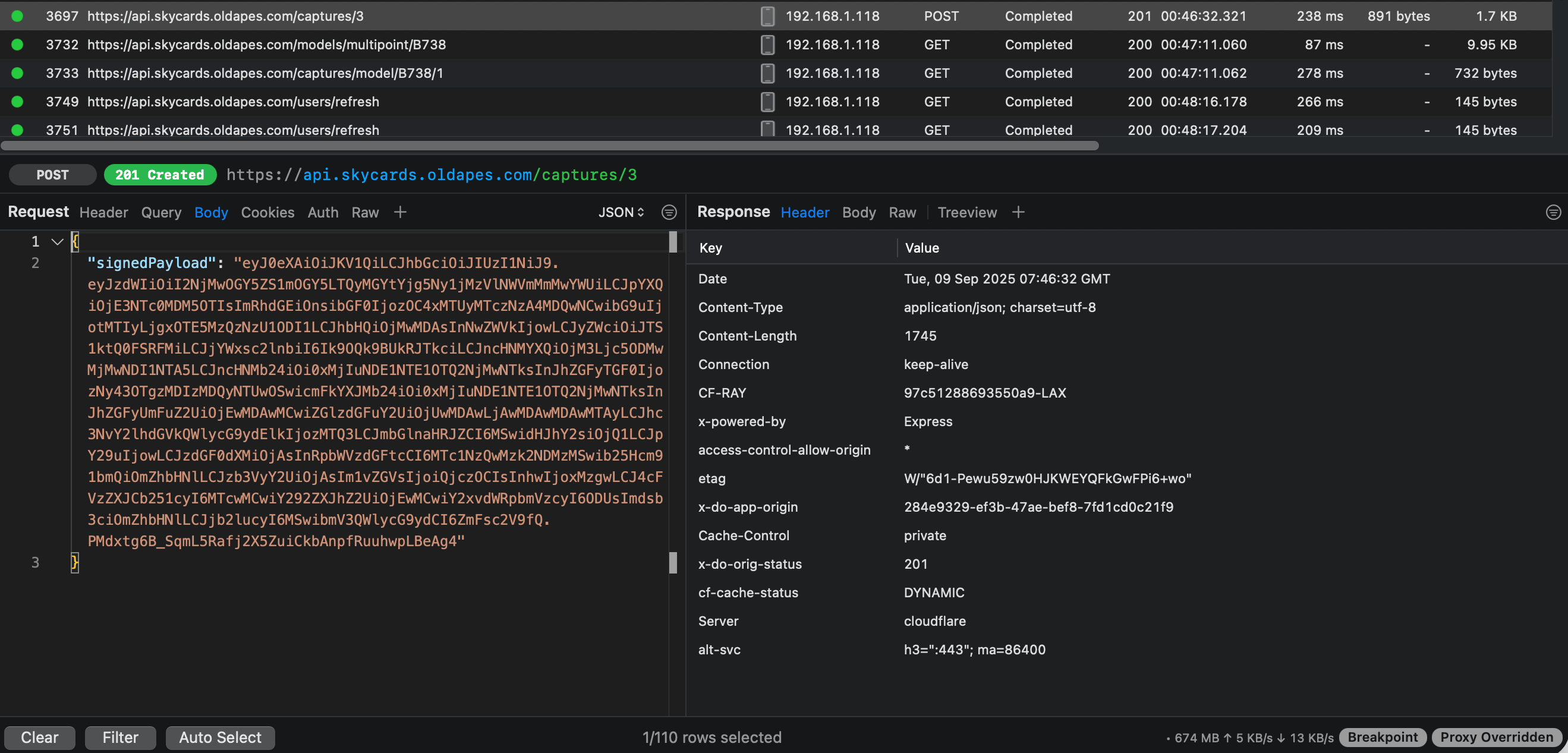
HTTP payload (redacted)
The server wouldn't accept unsigned register requests, so it was time to fire up the decompiler.
Android reverse engineering: APKLab + JADX
I booted a rooted Android emulator, installed the app from the Play Store, and extracted the APK. Then I opened it in APKLab and let it infer Java sources from the DEX/smali files.
It turned out the app was built with React Native, which meant the interesting bits were likely in the JS bundle.
Architecture tour: React Native + Hermes (and how I read it)
The app is React Native using Hermes. I jumped straight into the bundle-application and auth logic in RN apps is usually in JS. Native modules are typically small bridges to platform functionality (camera, crypto, storage) or third‑party deps, so I didn't bother there first.
Hermes emits compact bytecode. Gone are the days of trivially reversing RN bundles; Hermes reads more like a tiny VM than JavaScript. (Tools like hermes-dec help extract readable bytecode from the bundle.)
Fortunately, function names and strings weren't heavily obfuscated, which made tracing pleasant.
My workflow:
- Grep the RN bundle for endpoint‑like strings.
- Jump to the callers, then bubble up to action creators.
- For bytecode that's tedious to read, paste chunks into GPT‑5 to get a JS sketch, then verify manually.
That takes you straight to the JS that assembles the capture payload. The actual signing happens elsewhere.
I was honestly surprised how well GPT‑5 read and interpreted the bytecode. It's not perfect, but it's a huge time saver for tedious chunks.
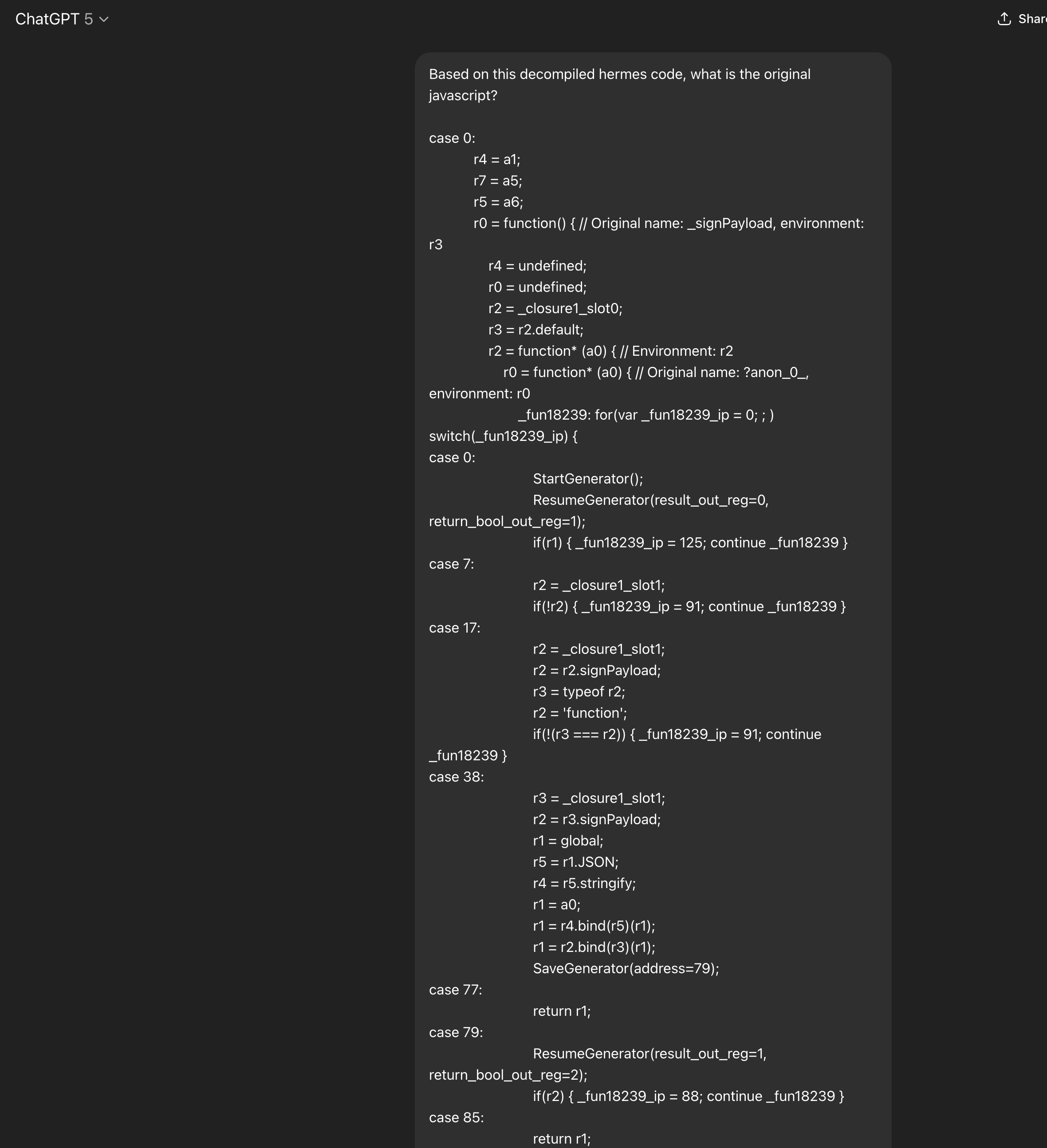
GPT‑5 returned a solid outline of what the original JavaScript looked like.
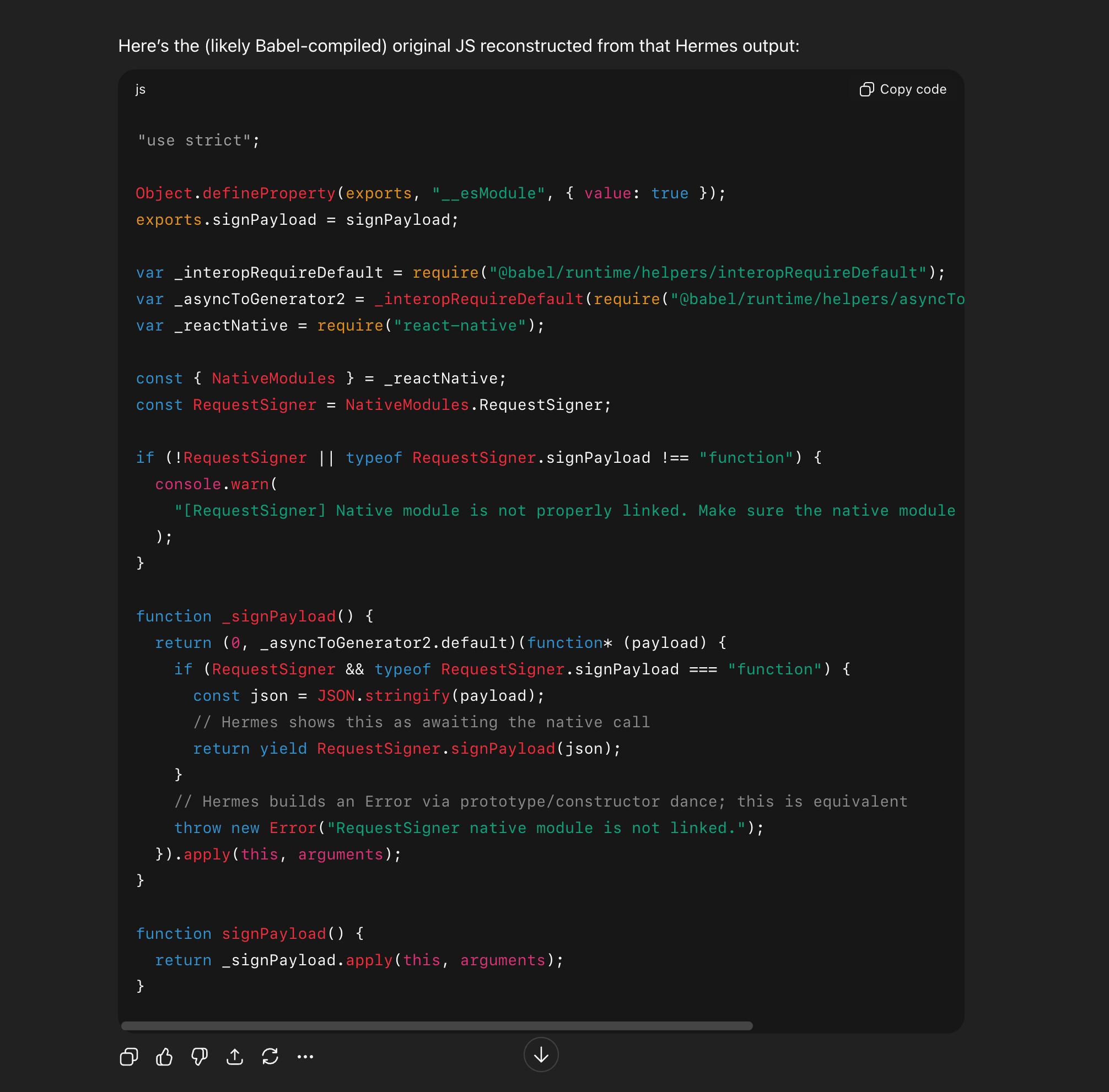
The full conversation and examples it decompiled are here - some pretty impressive stuff.
Where the heavy lifting happens: the native bridge for signing
React Native calls into a native "request signer." On Android, that's implemented in Java/Kotlin (visible as smali/Java in the APK). The signer generates a compact, JWT‑like token over the JSON payload using HS256, which the server verifies.
It turned out they were using a native module after all, which is fairly surprising. I looked up "Request Signer" in the code base, and there it was, in decompiled glory.
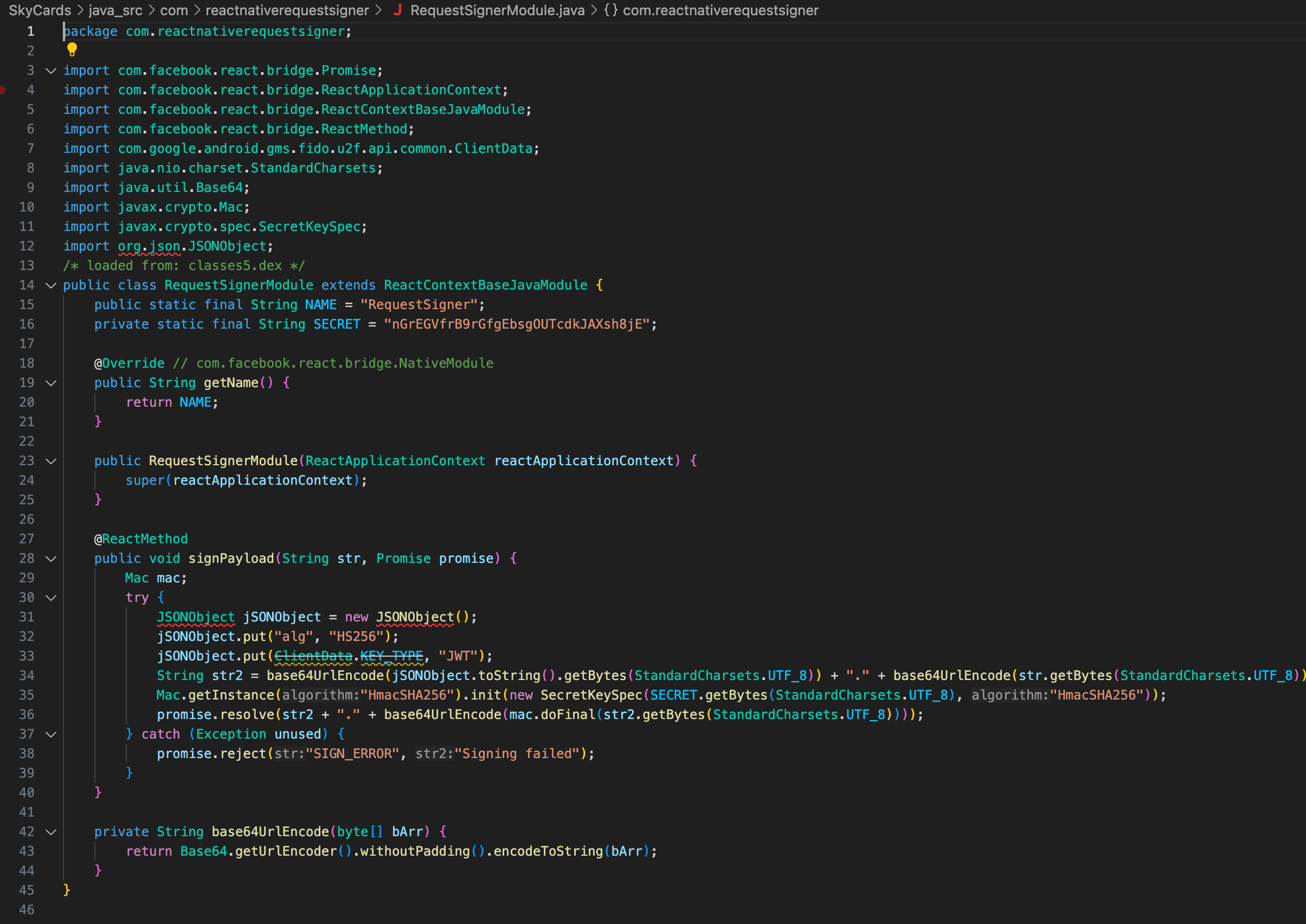
Signing the request
Once we had the secret, reimplementing the signature logic became trivial.
import { CompactSign } from "jose";
export async function signPayload(payload: string): Promise<string> {
const enc = new TextEncoder();
const key = enc.encode("nGrEGVfrB9rGfgEbsgOUTcdkJAXsh8jE");
const jws = await new CompactSign(enc.encode(payload)).setProtectedHeader({ alg: "HS256", typ: "JWT" }).sign(key);
return jws;
}We could now succesfully submit any plane capture we wanted. The server would respond with a success message and add the flight to our collection.
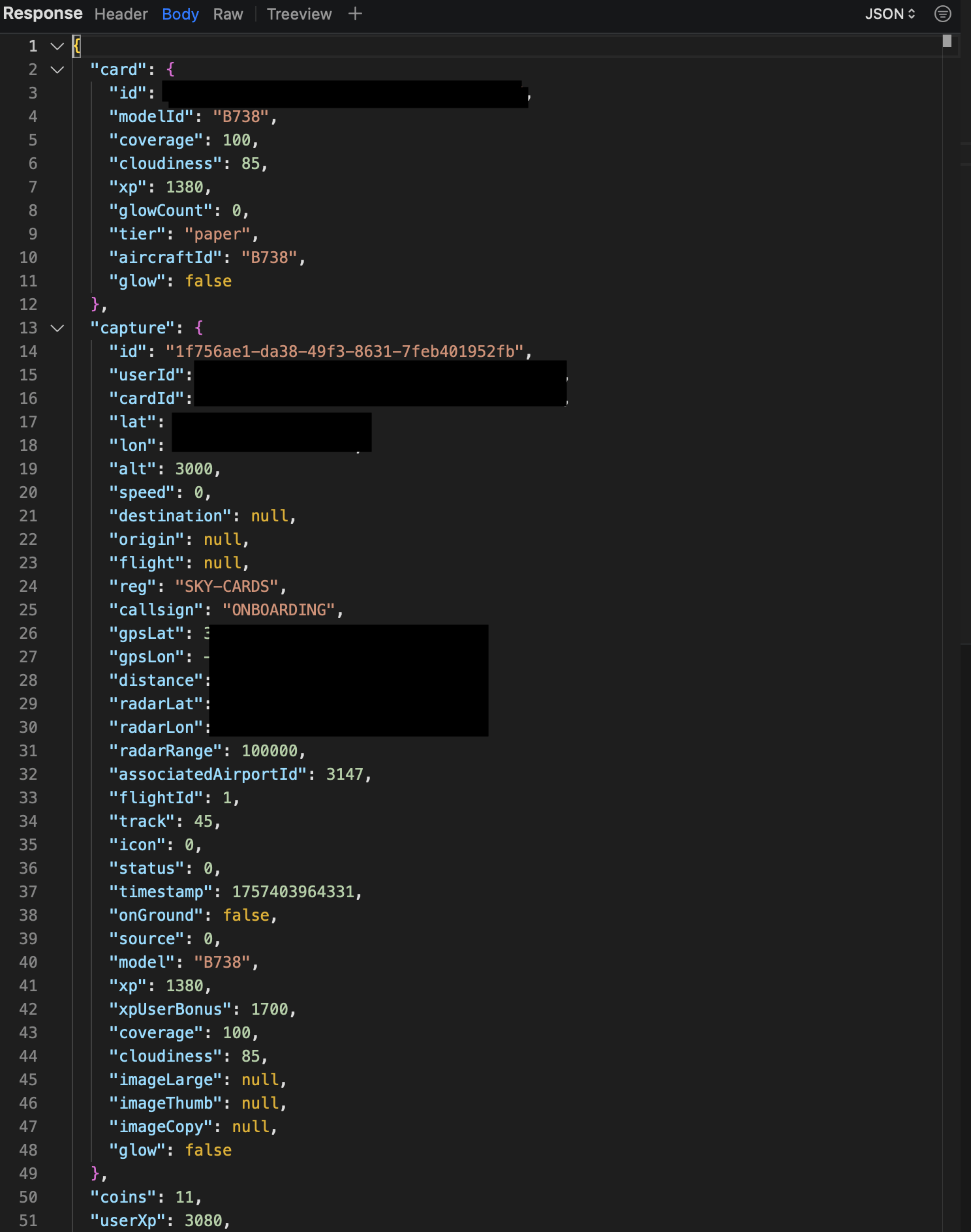
Successful response from the SkyCards API
Flight data side‑quest: protobuf/gRPC and a tiny client
SkyCards needs a list of nearby flights. FlightRadar24's web stack uses gRPC‑Web with protobuf for flight lists. The community has reverse‑documented enough message shapes from the web UI artifacts to be useful.
With those, I wrote a tiny client that:
- Accepts a bounding box.
- Calls the flight list endpoint and returns active flights.
- Produces just enough metadata to mirror what SkyCards expects when you select a flight.
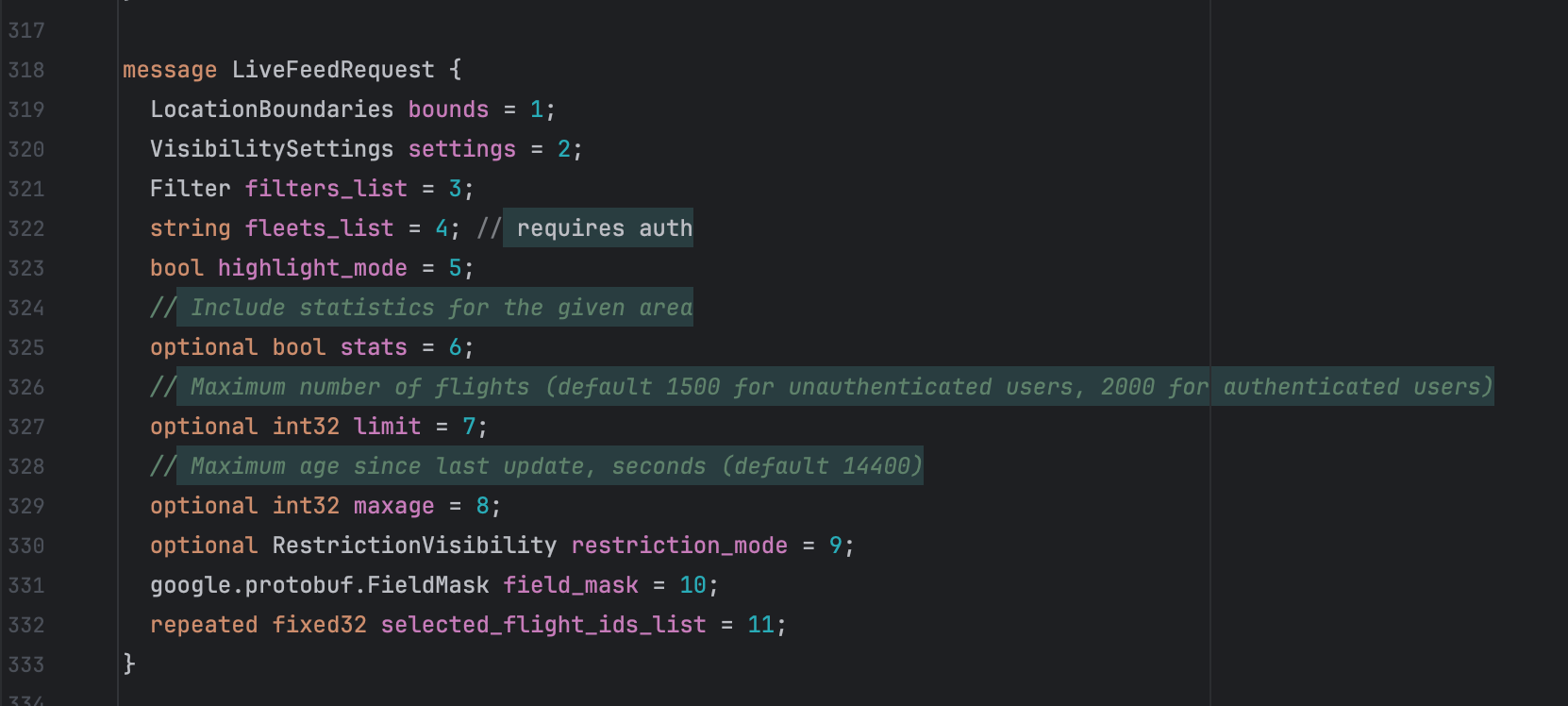
Putting it together: a simple automation loop
With (a) the capture payload shape and (b) a way to fetch flights, the loop looks like this:
const run = async () => {
const airportCodes = Array.from(airportMap.keys());
for (const c of chunk(airportCodes, 10)) {
const nearbyFlights = await findLiveFlights(c);
const uniqueByDestination = uniqBy(nearbyFlights.flightsList, (f) => f.extraInfo?.route?.to);
console.log(`Found ${uniqueByDestination.length} flights to ${c.join(", ")}`);
if (uniqueByDestination.length > 0) {
await pMap(
uniqueByDestination,
async (flight) => {
const details = await requestFlightDetails(flight.flightid);
const flightInfo = details.selectedFlightList[0]!;
const signedPayload = await constructSignedPayload(flightInfo);
await submitSignedPayload(signedPayload);
console.log(
`Tracked flight ${flightInfo.callsign} from ${flightInfo.extraInfo?.route?.from} to ${flightInfo.extraInfo?.route?.to}`,
);
},
{ concurrency: 2, stopOnError: false },
);
}
console.log("Done");
}
};
await run();I ran this for a bit and, less than an hour later, received an email saying I was banned for terms‑of‑service abuse. Fair. The point was the tour through the stack and to see if I could, not botting.
Appendix
The full code can be found on GitHub, as well as the decompiled APK and RN bundle.
